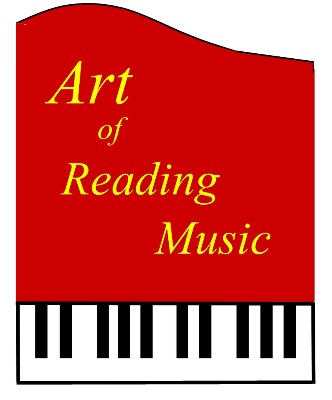Eye Motion Technics in Reading Music
Barbara A. Moir, M.Ed.
Sometimes in reading music, we blame problems on how complex the music is. Or we blame reading difficulties on our own lack of experience. What we don’t realize is that reading would be so much easier if we used a more advanced eye technic for seeing more notes at once. By doing so, our brain would receive information earlier and have more time to process it.
In my teaching, I have found that moving to more advanced eye technics is not something a person does naturally. It’s not like going from crawling to standing to walking. Instead, it feels better not to change the way we use our eyes. We want to stay in our comfort zone. It’s only through encouragement and explanations that we find the courage to risk experimenting with new eye technics and eventually master them.
Reading in music is very much like reading in the academic classroom. In kindergarten, we learned to read one letter at a time. By first grade, we were grouping letters into short words such as cat, run, and boy. In second grade, the groups of letters were longer. In later grades, we learned to read out loud with phrasing and expression by looking ahead in the sentence, to convey meaning as we read.
In reading music, there are also stages. Here are the ones I have observed:
Stages of Eye Motion Development in Reading Music
Stage 1: Reading one note at a time.
Stage 2: Reading notes in groups.
Stage 3: Looking ahead two or more measures.
Stage 4: (Pianists) Reading music for two staves.
Stage 5: (Conductors) Reading music for three or more staves.
INTRODUCTORY EXERCISE FOR INCREASING EYE MOTION: First, find or make a music staff containing only whole notes written either on the treble or bass staff. This exercise is for one hand only. Press the piano key for the first whole note as you begin saying the counts "1,2,3,4" at a slow pace.During the counts 2 and 3, look up at the ceiling. On count 4 bring your eyes back down to the whole note you are playing. Proceed to the next whole note. Repeat the process of looking at the note on beat 1, up at the ceiling for 2 and 3, and back down to the whole note on beat 4. Continue through the line, releasing your eye from the page on all the second and third beats in the measure.
This simple exercise proves you can move your eye off of the note you are playing. Therefore, if you can look at the ceiling during a note, you can just as easily look ahead in the music on beats 2 and 3.
Try the whole note exercise again. This time on beats 2 and 3, look at the next note, then back to the one you are actually playing.
For a more advanced trial, on beat 2 and 3, look at the whole note that is two measures ahead of where you are playing.
Now that you can see that advanced eye motion is possible, you can apply this to daily practice in small steps at first—only looking a note or two ahead. As you practice music in this manner, you will notice your eyes are constantly moving. They go out and come back, out and back, over and over as you play.
Of course, in some complicated situations where notes seem clustered together or rhythms are more complex, looking ahead may not give you the best advantage. As you develop more flexibility with your eyes, you’ll sense where this technic is helpful. Eventually you’ll find reading music much easier, with fewer mistakes.
